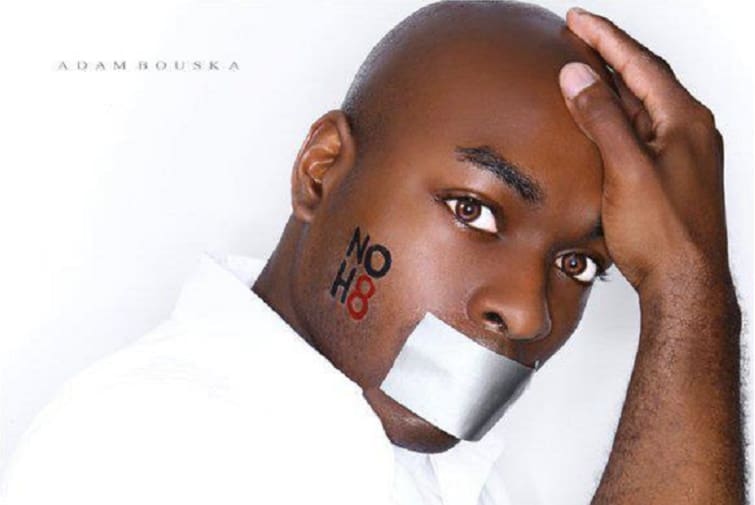The first time I attended a gay pride parade was in the summer of 1999 in New York City. I was fresh off the plane from Montgomery, Alabama, and finally free of all the restrictions that were commonplace for a queer kid of color raised in the Bible Belt. In the years prior, my sense of community and affirmation as a same- gender-loving man consisted of characters from E. Lynn Harris novels and the legendary queens from Jennie Livingston’s documentary, “Paris Is Burning.” It was the latter that began my infatuation with New York City and all the promise it held for an openly gay man who longed to exist as his authentic self without having to constantly be on the defensive.
As I exited the subway station and stepped onto Christopher Street, the sights and sounds of Pride were overwhelming. For the first time in my life I wasn’t alone. The thing that made me a tar- get for ridicule by schoolyard bullies and evoked disapproving glances from parents, including my own, was being celebrated. The euphoria I felt in that moment as I was engulfed in a sea of (mostly white) queer bodies, that appeared to stretch further than the human eye could see, was life-affirming. My gay identity was validated that day. But even at the tender age of 19, I was aware that my dual identity as a same-gender-loving man of color was a source of conflict, a kind of push and pull in predominantly (white) gay spaces where it appeared that one part of my identity was expected to be elevated over the other.
I don’t recall the first time I attended Atlanta Black Gay Pride; from being a spectator to working as a reporter to ultimately serving as an organizer of the annual State of Black Gay America Summit, the years have all run together in my head. But I do remember experiencing a similar euphoria as I stood on Peachtree Street and watched as throngs of beautiful black gay men stood in line at Bulldogs or sauntered about in the parking lot, or as thousands gathered on Sunday at Piedmont Park. This was different from my Christopher Street experience. This was home. It was a reflection of who I was at my core, black and same gender loving; two intersecting identities that beckoned to be celebrated simultaneously in the open without the identity politics that threatened to fragment my existence in other spaces. It was beautiful and necessary on the surface, yet deeply problematic underneath.
I’ve always had a love/hate relationship with Atlanta Black Gay Pride. The chiseled bodies, endless parties, and inflated club admissions over Labor Day weekend that remain a draw for thou- sands of people who travel to celebrate Pride in Atlanta have often left me with the recurring question: where is the pride in Pride? And beyond that, what happens in the lives of the men and women who are out and proud and a collective force to be reckoned with over Labor Day weekend once they return home and the parties have ended?
For some, I’m sure the work continues. Don’t get me wrong; I understand the purpose of partying during Pride and even the historical sense of refuge nightclubs have provided LGBT people in a world that offered very few spaces where we could be our authentic selves, or the sense of community
Pride gives those who may not have access to gay nightlife and the resources that a major city like Atlanta provides. But if we as a community are the roots of the tree, then we must bear fruit and make a commitment to invest in our collective political agency. The overall draw for Pride must move beyond lining the pockets of party promoters and heterosexual celebrity entertainers over the course of a designated weekend.
We must party with a purpose. We must be- come fully aware that the very act of showing up in our families or at work as our authentic black queer selves, or holding the hand of our partner outside the safety of the “gayborhood” of 10th and Piedmont, or worshipping in an LGBT affirming church, or taking the steps to demand respect as a bisexual or trans person of color is an act of political defiance to be exercised daily, not just during a holiday weekend. Our detractors who continue to work to marginalize our community and deny us a seat at the table would want nothing more than to isolate our pride to nightclubs and LGBT enclaves.
The euphoria I felt on Christopher Street nearly 20 years ago doesn’t have to be fleeting or reserved for a certain segment of the LGBT com- munity. We in the black gay community have the economic ability and fortitude to create the kind of world, and yes, even the kind of Black Gay Pride celebrations, that will continue to provide a much-needed escape from dual oppressions, but will also give us a reason to be proud long after the crowds have dispersed and we return to face the daily challenges of existence as black LGBT people. Otherwise, we run the real risk of Black Gay Pride becoming a circuit party by another name.

